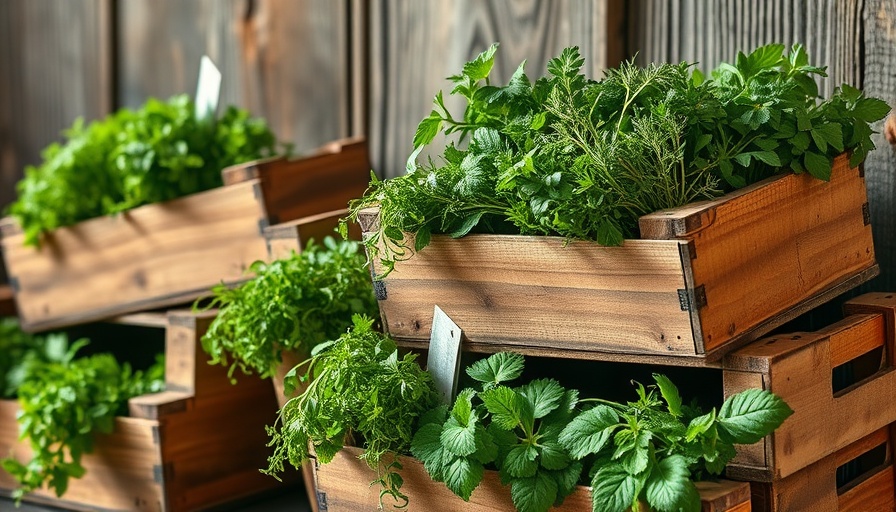
Elevate Your Culinary Experience with a Wine Box Herb Garden
Imagine having fresh herbs at your fingertips every time you step into your kitchen. A wine box herb garden not only maximizes your gardening space but also adds a touch of sophistication to your cooking adventure. Whether you reside in a bustling city or a serene suburban enclave, creating this small-space garden can become your new favorite project.
Why Choose a Wine Box for Your Herb Garden?
A wooden wine box is the perfect canvas for growing your aromatic herbs. Aesthetically pleasing and practical, this container allows for tight packing of multiple plant varieties, making it an excellent choice for urban gardening. You’ll enjoy an array of herbs like basil, thyme, rosemary, and cilantro, enhancing both your culinary creations and your entertaining occasions.
The Ideal Herbs for Your Wine Box
When planning your wine box herb garden, opt for a mix of herbs that thrive in similar conditions. For example, consider pairing basil and oregano with more aromatic options like lavender. This creates not only a stunning visual palette but also a delightful aroma that will tantalize your senses. Additionally, herbs like parsley and cilantro can flourish alongside innovative pepper varieties such as ‘Lemon Dream,’ creating a compact yet diverse ecosystem in your garden.
Materials Needed for Your DIY Wine Box Herb Garden
To begin crafting your wine box herb garden, gather the following materials:
- Large wine crate
- Sandpaper
- Wood glue
- Screws
- Outdoor silicone sealer
- Plastic sheet
- Container soil mix
- Your choice of herbs and vegetables
Finding a wine box is easier than you might think! Local wineries, restaurants, or online marketplaces offer affordable options, providing a smooth start to your gardening journey.
Steps to Create Your Wine Box Herb Garden
Follow these easy steps to set up your wine box garden:
- Prepare the wine box: Remove shipping stickers using a hair dryer to heat the adhesive, making peeling easier. Sand any rough areas to ensure a smooth finish.
- Protect the wood: Fill any cracks with wood glue and secure joints with screws as needed. Apply a clear sealant to protect the exterior from moisture.
- Line for drainage: Insert a plastic sheet within the box, ensuring to create drainage holes so that excess water does not accumulate.
- Plant your herbs: Use a high-quality container soil mix and plant your carefully selected herbs. Position taller plants in the back and shorter ones in the front for a visually pleasing arrangement.
Caring for Your Wine Box Herb Garden
Maintaining your herb garden involves simple yet effective plant care practices. Regularly check the soil moisture; herbs typically prefer drier conditions rather than being overwatered. Consider organic pest control techniques to keep your plants healthy and thriving.
Transform Your Space with Herb Garden Design
Your wine box herb garden serves not just as a source of fresh flavors but also as an attractive element in your outdoor space. Enhance the visual appeal by arranging your garden along your patio or balcony, creating a focal point that invites relaxation and culinary creativity.
Conclusion: Grow, Harvest, and Enjoy
Creating a wine box herb garden is an enriching experience that elevates your cooking while connecting you to the joys of gardening. Through a little time and effort, you’ll cultivate a vibrant ecosystem filled with freshness and flavor. Get started today, and let the aromatic journey of gardening unfold in your own kitchen!
 Add Row
Add Row  Add
Add 




Write A Comment